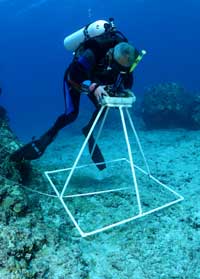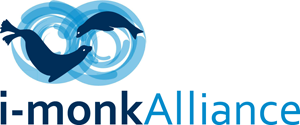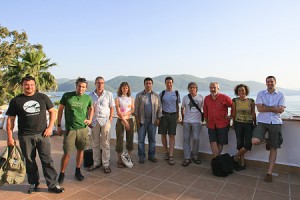Press Watch, National Geographic BlogWild, July 15, 2009
 If you believe the Beatles, love is all you need. Perhaps … but best bring SCUBA gear just in case.
If you believe the Beatles, love is all you need. Perhaps … but best bring SCUBA gear just in case.
Badem, an orphaned monk seal that lives just off Turkey’s Mediterranean coast, gives killer hugs—literally!
The affectionate pinniped loves to play with people. […]
Marine ecologist and National Geographic Fellow Enric Sala got called in last year, along with Turkey’s Underwater Research Society (SAD-AFAG), to help teach Badem not to hurt the ones she loves. […]
Full BlogWild article
TMG comment and reply to BlogWild
Ah! for those halcyon days when National Geographic was actually a serious journal, rather than a Disney publication.
Contrary to the impression conveyed in your “report”, rescue and rehabilitation of Mediterranean monk seals — Europe’s most endangered marine mammal — is an issue of crucial importance. With few case studies from which to draw experience, each rehabilitation presents a steep learning curve to those involved — veterinarians, nurses, researchers, volunteers. Occasionally, pups in rehab may become imprinted on their human carers, and — as in Badem’s case — continue to interact with humans after release. One of the keys to remedying this behavioural aberration is to discourage beach-goers and swimmers from playing or interacting with the animal — thereby benefiting both the seal itself and the humans involved. Swimming with monk seals can be dangerous — as attested by the considerable numbers of people who have sustained injuries during such play.
Making light of the risks rather than emphasising their potential seriousness, your picture story only ends up romanticising such interactions, and is therefore the height of irresponsibility (as well as poor journalism).
To suggest that a National Geographic Fellow was called in “to help teach Badem not to hurt the ones she loves” (i.e. by swimming and interacting with her) is not only an insult to the intelligence but also to all those dedicated people who have been working in monk seal rehab and post-release monitoring over the years.
William M. Johnson, Editor, The Monachus Guardian, www.monachus-guardian.org

 If you believe the Beatles, love is all you need. Perhaps … but best bring SCUBA gear just in case.
If you believe the Beatles, love is all you need. Perhaps … but best bring SCUBA gear just in case. The Northwestern Hawaiian Islands’ Papahānaumokuākea Marine National Monument has published a draft Natural Resources Science Plan, outlining a range of proposed research programmes aimed at promoting the conservation and recovery of both habitat and specially protected species. Among those species is the critically-endangered Hawaiian monk seal.
The Northwestern Hawaiian Islands’ Papahānaumokuākea Marine National Monument has published a draft Natural Resources Science Plan, outlining a range of proposed research programmes aimed at promoting the conservation and recovery of both habitat and specially protected species. Among those species is the critically-endangered Hawaiian monk seal..jpg)

